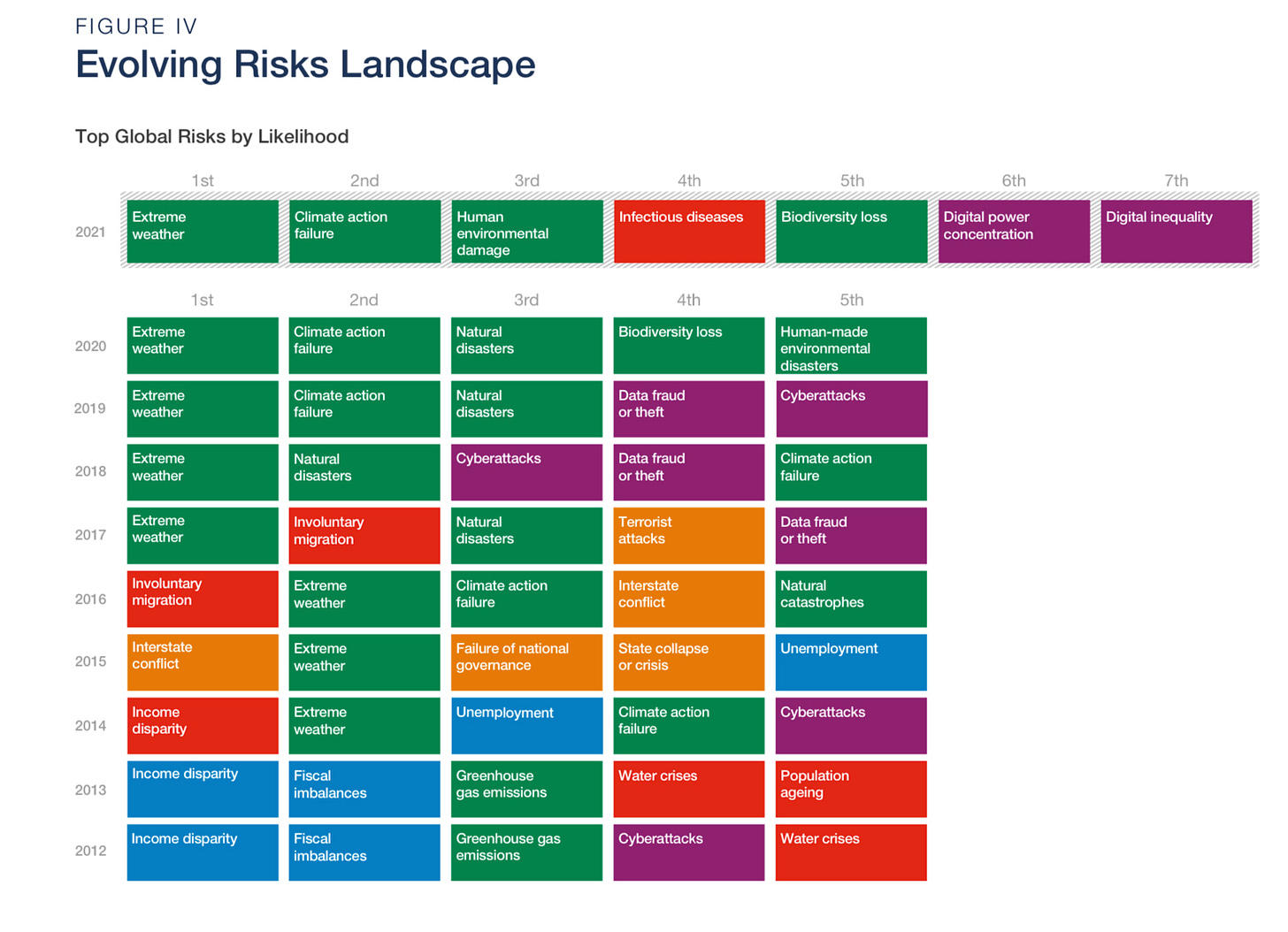
Normally at this time of the year, the Swiss resort of Davos is full of the world’s elites gladhanding each other under the auspices of the World Economic Forum. This year, they’ve had to do it virtually. This has had several good effects.
The best of them is that almost no-one noticed the event. Apart from some diplomatic sabre-rattling by China’s Premier, there was almost no coverage. I’m taking this to be a media effect: when senior journalists go on an expensive trip, their paper or channel feels the need to publish copy, whether or not it is interesting. If there are no out of pocket costs, the copy has to fight its way in on merit.
A related effect was that I didn’t have to read a single article profiling a billionaire tech bro taking an afternoon away from the proceedings to go skiing.
Deconstructing the World Economic Forum
The lack of noise—which reflects the genuine news value of what happened during the World Economic Forum’s virtual event last week—allows me to think about WEF as a construct. It basically does three things:
- acts as a network for members of the political and financial elite
- promotes slightly progressive business perspectives (but nothing too far ahead of the mainstream)
- sponsors collections of “performative futures” work about sectors and ideas.
The WEF was created in 1987, out of an earlier European Management network. This was just at the point where the financial “big bang” and right-wing political ideas had combined to create an elite that were far wealthier than the mainstream. As a reference point, the film Wall Street appeared in 1987 and Michael Lewis’ book Liar’s Poker, about the high-rolling ‘big swinging dicks’ of Salomon Brothers, was published in 1989. So they needed somewhere to huddle together.
Progressive, but only just
WEF also positions itself as progressive, but in practice, only just. Davos events are famous for the handwringing of the powerful about outcomes they could influence, if only they could be bothered. But it never heads too far off piste. For example, the 2020 WEF manifesto about stakeholder capitalism was published months after the Financial Times had re-branded and the fairly conservative US Business Round Table had declared that shareholder capitalism was over.
Finally, performative futures. WEF has popularised the idea of the “Fourth Industrial Revolution” in 2016, which on inspection looks awfully similar to the “Third Industrial Revolution” that Jeremy Rifkin described in his book of the same name in 2011. Rebranded for marketing purposes? Who knows? Most of this work is led by big-hitters from the global consultancies, attached for free or way below cost because of the people you get to meet. But again—the thinking never strays too far into territory that WEF’s corporate members would find not to be “plausible”.
Comfortable opinions
As a futurist, this has its benefits. When WEF says something, you can know that this is a view that mainstream business opinion feels comfortable moving towards. It’s a signal of an idea’s maturity. The annual risk assessment, which asks members of the elite for their perception of the risks landscape, is a case in point.

Here’s a diagram from this year’s risk report, showing the top perceived risks—by likelihood—over time. There are always a couple of headline-driven outliers. But we can see they are now persuaded of climate risks. But the risks of inequality (outside of the digital sphere) have completely fallen off their radar. We’ll see how that works out.
This post also appeared on my (free) Substack newsletter.
